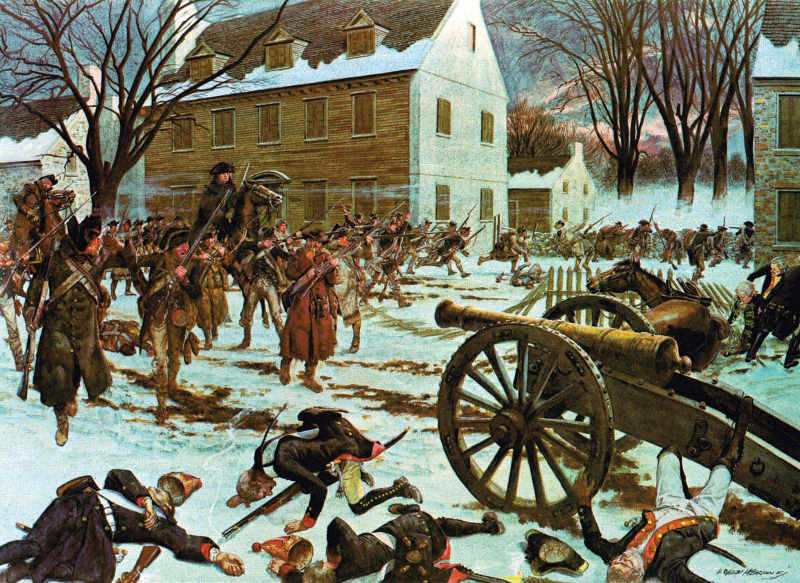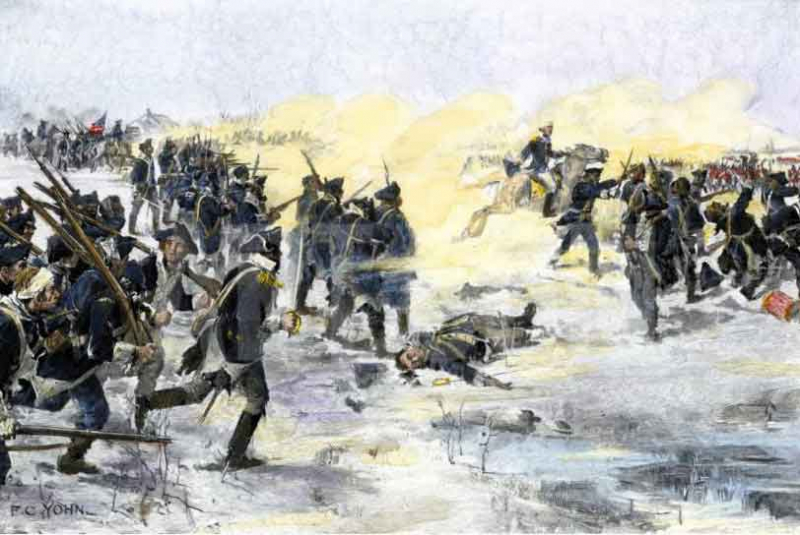The weather once again came to the rescue of the Continental Army
The start of 1777 brought moderate temperatures, turning the icy roadways near Trenton into mud puddles. The head of the British Army advanced into Trenton on January 2 at a speed of just over one mile per hour due to the appalling circumstances.
The temperatures continued to drop as the fighting at Assunpink Creek came to a conclusion, and the night grew "exceedingly dark." To avoid "the impression of a retreat," Washington and his officers decided during a council of war that a strike on Princeton would free the army from its precarious situation.
Washington issued an order for the extra luggage to be transported to Burlington so it could be sent to Pennsylvania. The cannon could be moved without sinking into the ground since the ground had frozen. The luggage was on its way to Burlington by midnight, and the cannons were covered in a thick cloth to muffle noise and keep the British from discovering about the departure. The weather once again came to the rescue of the Continental Army. Washington left 500 troops behind with two cannons to patrol, maintain fires, and use picks and shovels to pretend to be digging into the British. These men were to assemble with the main army before dawn.













